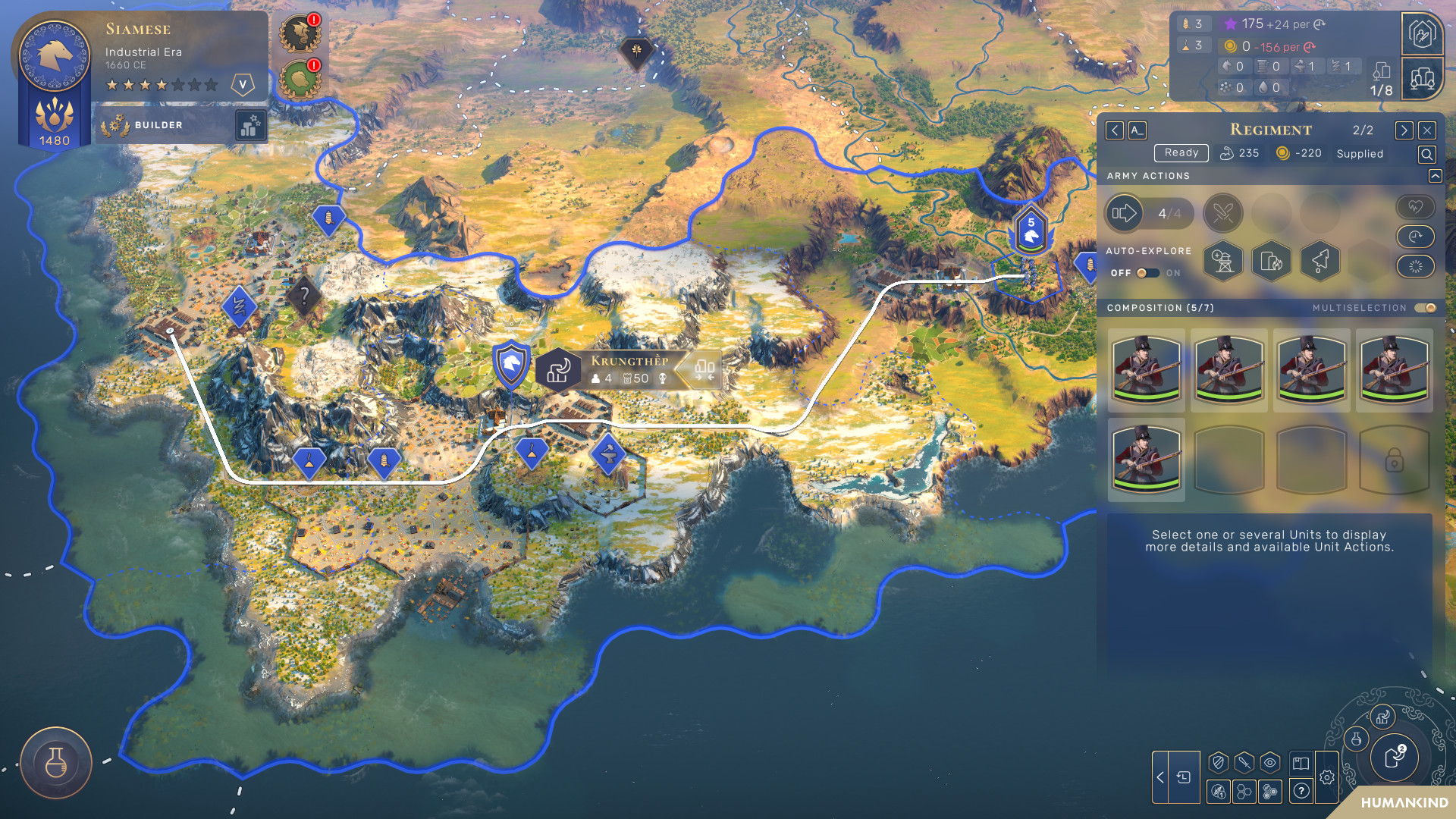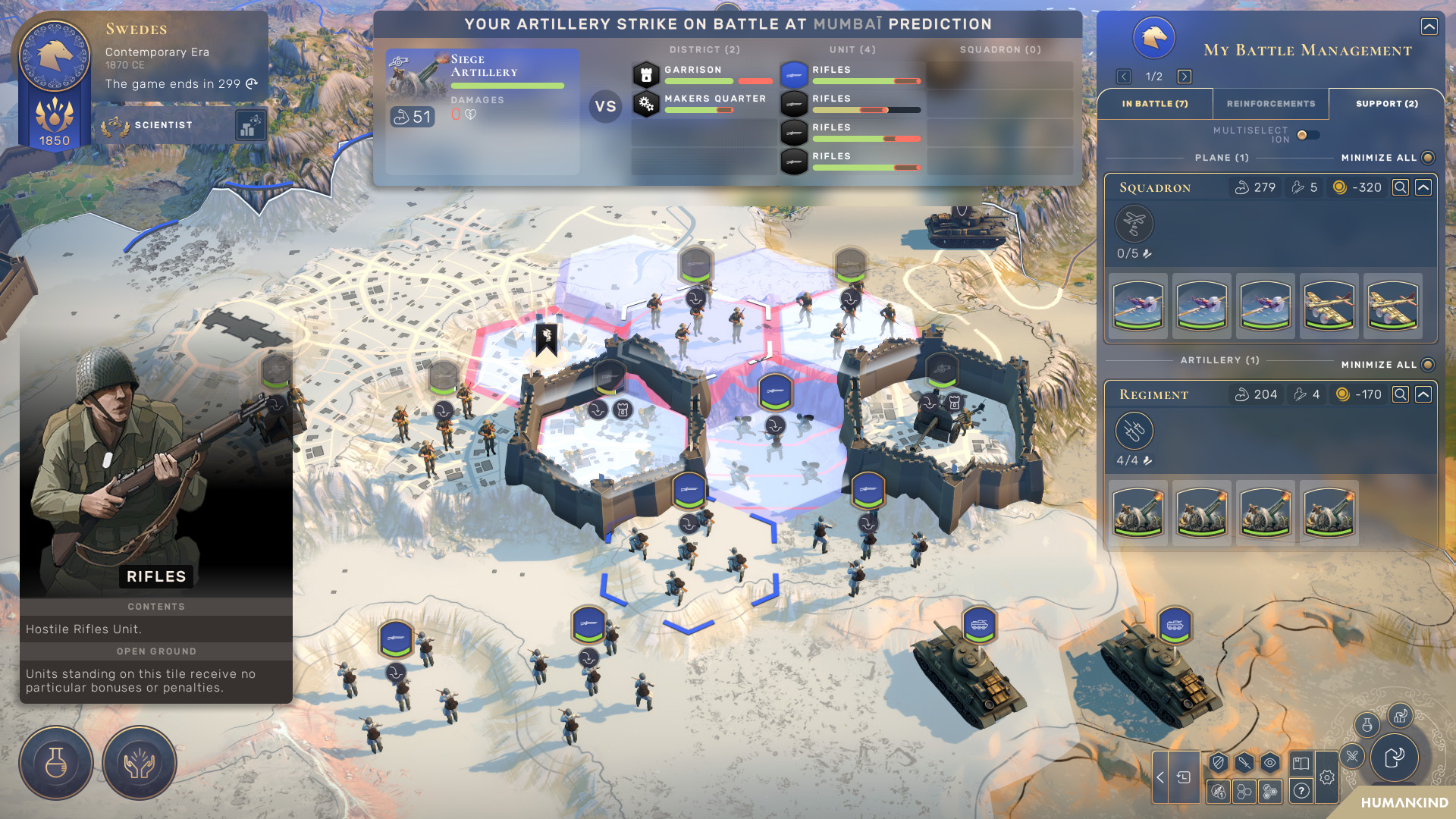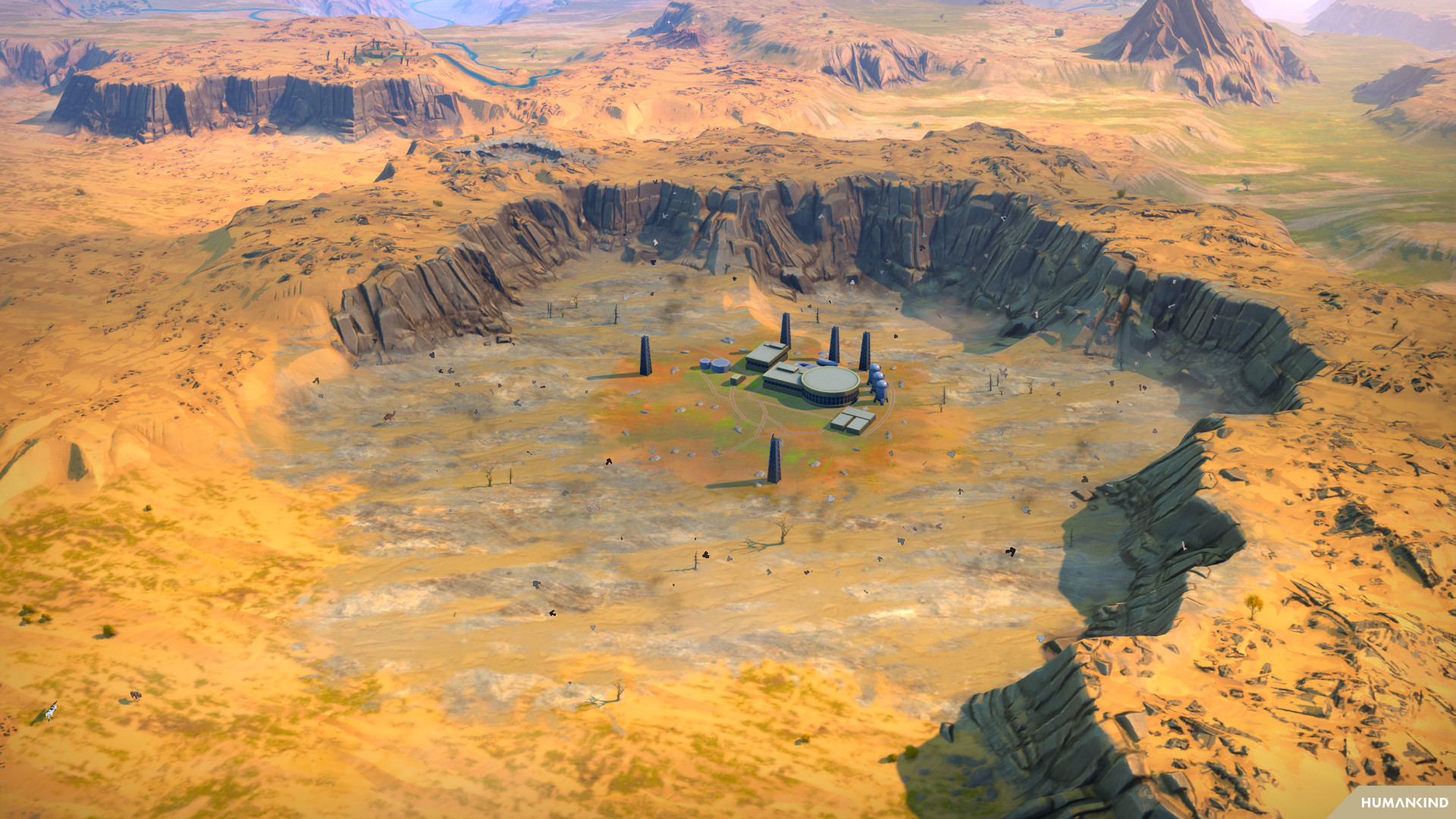Hello everyone,
It’s been a while since our last Feature Focus for Humankind, since we had already covered most of the game, but it is now time for one final episode before the release of the game. There’s still one area of the game we have not talked much about and that you did not yet get to try: The late game. So, let’s dive right into what you can expect in the Contemporary Era (and some changes to the Industrial Era) with the video and blog below.
We don't want the late game of Humankind to become a slog of clicking end turn even though you already know you have won or lost. To that end, we introduce a number of changes and new features starting in the Early Modern but especially in the Industrial and Contemporary Eras to face you with new challenges to overcome and perhaps even upset the balance of power. Research, economy, and warfare will all offer new opportunities and sometimes new dangers in the late game!
With the invention of steam power, railroads, and (powered) flight, the world seems to get smaller as your options grow. Railway stations in neighboring territories will allow you to move your armies between them for only a single movement point, letting them cover vast distances in a single turn. For even longer journeys, you may want to rely on airports instead, which allow your armies to move instantly between them. Additionally, railway connections and airports will make trading easier, which may be important to you as coal, oil, and other new strategic resources become important. With airports, you may even be able to bypass an unfriendly neighbor and trade directly with somebody further away.

An extensive train network will offer your troops great mobility... Just don't let the enemy block the tracks.
Trains and planes are not the only noteworthy inventions in the late game. Many technologies in the Industrial and especially the Contemporary Era offer empire-wide bonuses that allow you to capitalize on a strong scientific foundation even if your industrial base, population, or military may not be as strong. Several of the most advanced technologies at the end of the technology tree offer particularly powerful bonuses and will grant you a large amount of fame as well.
On the other hand, if you feel that your industrial power is greater than your research capabilities, you can invest in the National Projects like Planetary Observation Satellite Launches or your Lunar Landing Project. Much like Cultural Wonders, National Projects are Shared Projects that several cities can collaborate on, but they are even grander in scope: They require more space to be reserved for them and are completed across multiple stages. Each of these stages will grant you fame, as well as permanent economic benefits.
Be careful when expanding your industrial base, though: Certain Districts and Infrastructures will generate Pollution. While your people can deal with a small amount of pollution, high levels of pollution will be a problem. Locally, territories with moderate to high pollution will suffer high to severe penalties to stability and most resource yields of their tiles. High amounts of global atmospheric pollution will apply moderate penalties to all players everywhere, and in the worst cases can lead to the game and your story of humankind ending early.
Of course, not every player enjoys focusing primarily on their economy, and those of you who prefer a more aggressive approach to dealing with your neighbors will find that warfare changes in the late game as well.
These changes begin with the advent of gunpowder warfare in the Early Modern Era. Arquebusiers and Musketeers no longer suffer penalties against melee attackers like their counterparts of the earlier eras, but are less mobile than them, unable to both move and fire in the same turn. This limit to their mobility disappears with Line Infantry in the Industrial era, but at that point your soldiers have learned to entrench themselves for a huge defensive bonus against ranged attacks, so you may be better off standing still anyway.
Some powerful heavy weapons will be able to shatter not only the fortifications of enemy cities, but also the field defenses of enemy soldiers, depriving them of their defense bonus for being Dug In. If you would rather pin your opponent down, you can hit them with volleys of Machine Gun fire, which will reduce their combat strength and forbid movement, but be ready for your enemy to field Armored Vehicles to ignore this suppression effect.
Once you bring the really big guns, though, the battlefields become too small. Artillery and warships of the late Industrial Era and beyond are so powerful and have such long range that it can fire into battles from outside the battlefield, hitting multiple tiles at a time. Even if there is no battle to support, these cannons can wear down your enemies by shelling their armies or districts to damage everything in a small area.

Against these trenches, rifles and bayonets won't cut it.
If even the long range of your mightiest cannons is not enough, you may want to turn your attention to the skies. All aircraft in Humankind, from early biplanes to contemporary multirole fighters, can perform bombardment missions. Of course, multi role aircraft and dedicated bombers are much better at this task than fighters, but you may still want to send a few fighters along on the mission to engage the enemy air cover trying to shoot down your attackers.
However, if you do send your fighters on the attack, you give up their patrols in the territories bordering their airfield or carrier, losing both air defense and vision in these areas. Perhaps it would be better to hold some fighters in reserve, unless you are confident in the ground-based anti-air power from your units and infrastructures.
For all the firepower of artillery and air force, the most devastating weapon in your arsenal in the Contemporary Era will be nuclear missiles, capable of obliterating a small area of the map so thoroughly it can never be exploited again. In fact, they are so devastating that you may be better off not using them.
Nuclear weapons in Humankind are a big investment: You need to invent Nuclear Fission, invest in the Nuclear Proliferation Civic, conduct one or more nuclear tests, and then still construct the expensive weapons. As you are going through this process, any civilization that has enacted the Nuclear Disarmament choice of the civic will get a grievance against you any time you fire a test or nuclear missile.

Nothing to see at this top secret test site in the middle of a desert. Move along!
Even after you have gone through all of these steps, launching a weapon of mass destruction will take time. In Humankind, ordering a nuclear strike only prepares the missile to launch at the start of the next turn. Other players are also notified about the nuclear strike, so they will have a chance to launch their own nuclear weapons in retaliation. This potential for mutually assured destruction should create tension, rather than giving a massive advantage to the first strike.
We hope you’re excited to experience the new obstacles and opportunities of Humankind’s late game soon!






































.png)






























































